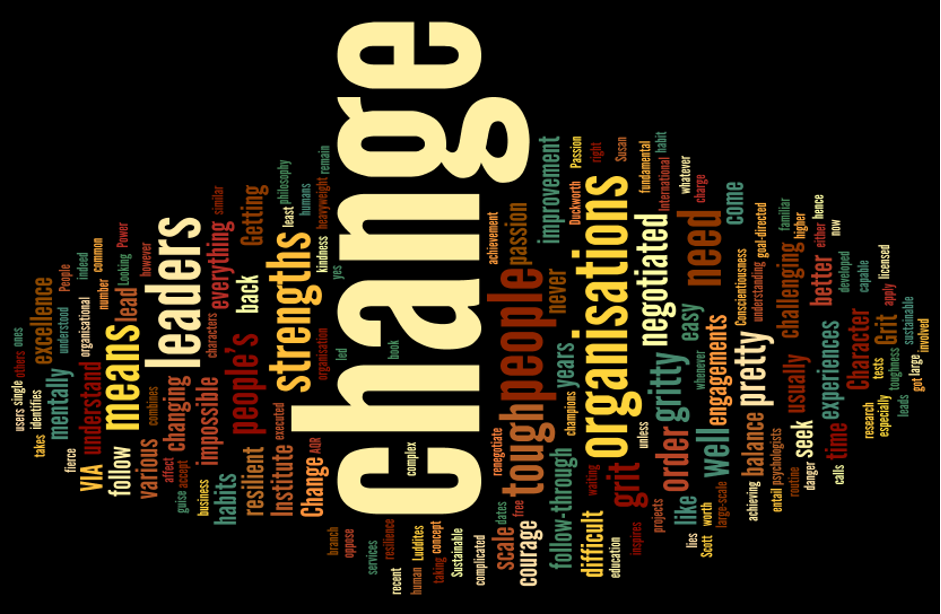Sustainable change? Only gritty leaders need apply.
“Change will not come if we wait for some other person or some other time. We are the ones we’ve been waiting for. We are the change we seek.”
- Barack Obama
Change really is the only constant. Indeed, if you follow the branch of philosophy that inspires me (which dates back to Heraclitus 400 years before the common era), everything is change, and everything is process. If this suggests that change is complex, well yes it can be; it can also be complicated and simple too. It’s all a matter of scale. But, whatever the scale, achieving sustainable change is never easy, unless you’re pretty single minded. Why so?
For me at a fundamental level, change, at least in the human world, boils down to changing people’s habits, which is difficult, but not impossible. That said, it becomes more difficult and more impossible when you have a group of people involved, that is an organisation. People in organisations change those organisations all the time, but there always remain processes and habits which, however or whenever they’re executed, follow a similar pattern (they’re never the same, humans aren’t robots). And people like routine, the familiar, the comfortable. We are, in general, creatures of habit. So, when people like me or others come along seeking change and improvement, especially large-scale improvement, it can be pretty challenging. That’s because people in organisations (social, business or other) have usually negotiated the order in which those organisations are configured and operate, and changing a negotiated order is tough.
I’ve led several large change projects over the years in financial services IT and in higher education. None of them was easy for either me or the people in the organisations that were affected. My experiences lead me to suggest that change leaders need to be ‘gritty’.
‘Grit’ is a concept that exists in various forms developed by various psychologists. Its most recent incarnation is in the great book by Angela Duckworth: Grit – The Power of Passion and Perseverance, built off some pretty heavyweight research. In this guise, grit combines courage, conscientiousness, follow-through, resilience, passion for excellence, and other strengths. Conscientiousness means that you are achievement oriented. Follow-through means that you are goal-directed and capable of endurance. Resilience means that you are mentally tough. Strengths within people’s characters are now well understood and the VIA Institute on Character identifies 24 strengths, all of which may affect your capacity to lead or accept change.
What grit enables change leaders to do is to better engage with Luddites who oppose change. Such engagements usually entail what Susan Scott calls fierce conversations. These engagements are not guaranteed to change people’s trajectories, but they can. And they are tough, hence the need for gritty and particularly mentally tough or resilient leaders. Looking back to my own experiences, courage, mental toughness and follow-through was what got me through, as well as kindness to those whose livelihood I was challenging. A passion for excellence is what engages champions of change.
Getting the balance right between the different groups means that change leaders can renegotiate organisational order. Getting the balance wrong leads to negotiated disorder, and there lies danger.
You can get an understanding of your strengths for free from the VIA Institute for Character. You can better understand how resilient you are by taking a number of tests, but the best is MTQ48 from AQR International, and licensed users will charge you (it’s worth it). You can improve your strengths, but you need to understand them first.
We are indeed the change we seek, but that takes grit.

